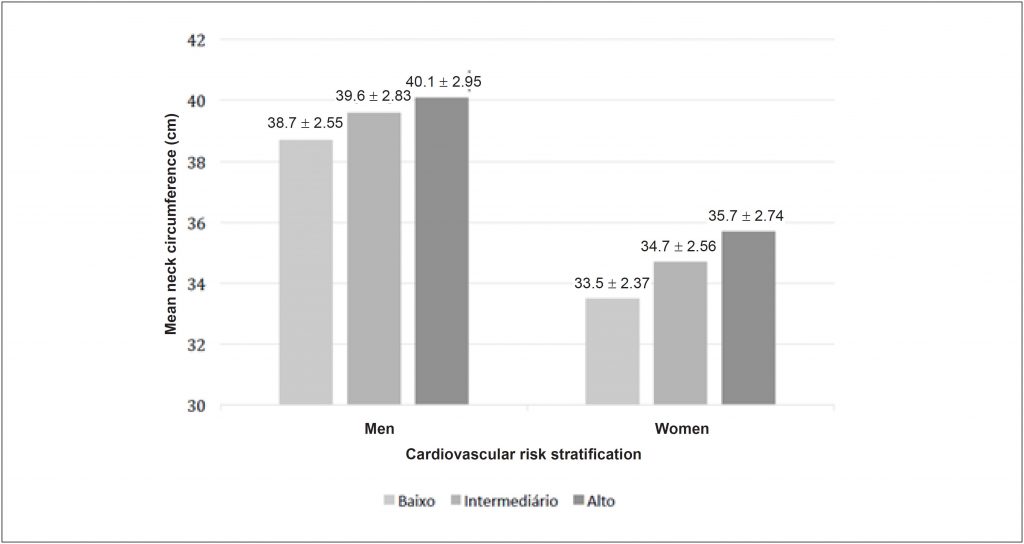Arq. Bras. Cardiol. 2020; 115(5): 840-848
Neck Circumference and 10-Year Cardiovascular Risk at the Baseline of the ELSA-Brasil Study: Difference by Sex
Abstract
Background:
Neck circumference (NC), an indirect measure of upper-body subcutaneous adipose tissue, has been pointed out as an independent predictor of cardiometabolic diseases.
Objectives:
To assess the association between NC and 10-year cardiovascular risk in men and in women.
Methods:
Cross-sectional analysis of 13,920 participants of the (baseline) Longitudinal Study of Adult Health (ELSA-Brasil). The association between NC (used as continuous variable and grouped into quartiles) and the 10-year cardiovascular risk was estimated by the Framingham Global Risk Score and analyzed by generalized linear models after adjustments for sociodemographic characteristics, health behaviors, body mass index and waist circumference. The significance level adopted was 5%.
Results:
Mean NC was 39.5 cm (SD± 3.6) in men and 34.0 cm (SD±2.9) in women. After adjustments, a one-centimeter increase in NC was associated with an increment of 3% (95%CI1.02-1.03) and 5% (95% 1.04-1.05) in the arithmetic mean of the 10-year CVD risk in men and women, respectively. Men and women in the last quartile showed an increment of 18% (95%CI 1.13-1.24) and 35% (95%CI 1.28-1.43), respectively in the arithmetic mean of the 10-year CVD risk, after adjustments.
Conclusions:
We found a positive, independent association between NC and the 10-year cardiovascular disease risk. NC may contribute to the prediction of cardiovascular risk, over and above traditional anthropometric measures.
Keywords: Adiposity; Cardiovacular Risk; Cardiovascular Diseases; Gender; Risk Factors
2,330

